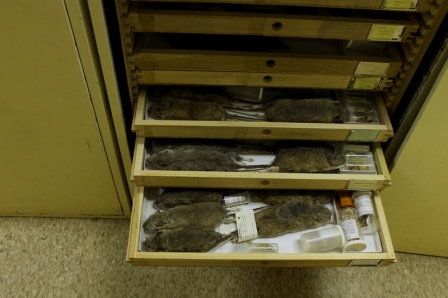
The Wildlife Museum is in integral element of the Department of Fish, Wildlife and Conservation Ecology at New Mexico State University. The collections consists of approximately 800 lots of fishes, 200 specimens of amphibians and reptiles, 1,900 specimens of birds, and 3,000 specimens of mammals. The emphasis of the museum is on education, although the collections also serve as a basis for a variety of research. The Wildlife Museum is a member of the NMSU Center for Natural History Collections, which functions to promote natural history museums on the NMSU campus.

Mission and Vision Statement
Mission
The mission of the New Mexico State University Vertebrate Wildlife Museum (VWM) is to serve New Mexico State University and the local community by inspiring and advancing an understanding of wild animals, the habitats in which they occur, and their relationships with humans. This is accomplished by supporting teaching, research, interpretation, and the dissemination of information. Properly curated collections of vertebrate specimens are an essential part of this mission.
Vision Statement
The VWM will be an integral and valued component of the education and research missions of the Department of Fish, Wildlife and Conservation Ecology (FWCE) that will provide exceptional services to the college, university, and local community.
The VWM will:
-
Acquire and maintain a comprehensive collection of quality vertebrate specimens that are representative of the biological diversity in the American Southwest, which will support university instruction, particularly within the FWCE.
-
Properly curate and care for specimens so that they will fully function to both educate students about the diversity of life and serve as comparative reference material in research.
-
Provide resources and support for research by faculty and students within the FWCE, including as a repository for voucher specimens collected during field studies.
-
Foster an active educational program for the local community, including through supporting programs such as 4H and FFA.
-
Have dedicated faculty oversight and an adherence to conventional standards and ethics in museology.
-
Promote an understanding of the inherent value and uses of museum collections in this era of declining biodiversity and provide training to undergraduate and graduate students on the management of natural history collections.
-
Collaborate with other natural history museums to foster greater efficiency and integration of museum functions and to more effectively interpret and disseminate information about biodiversity.

